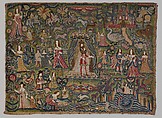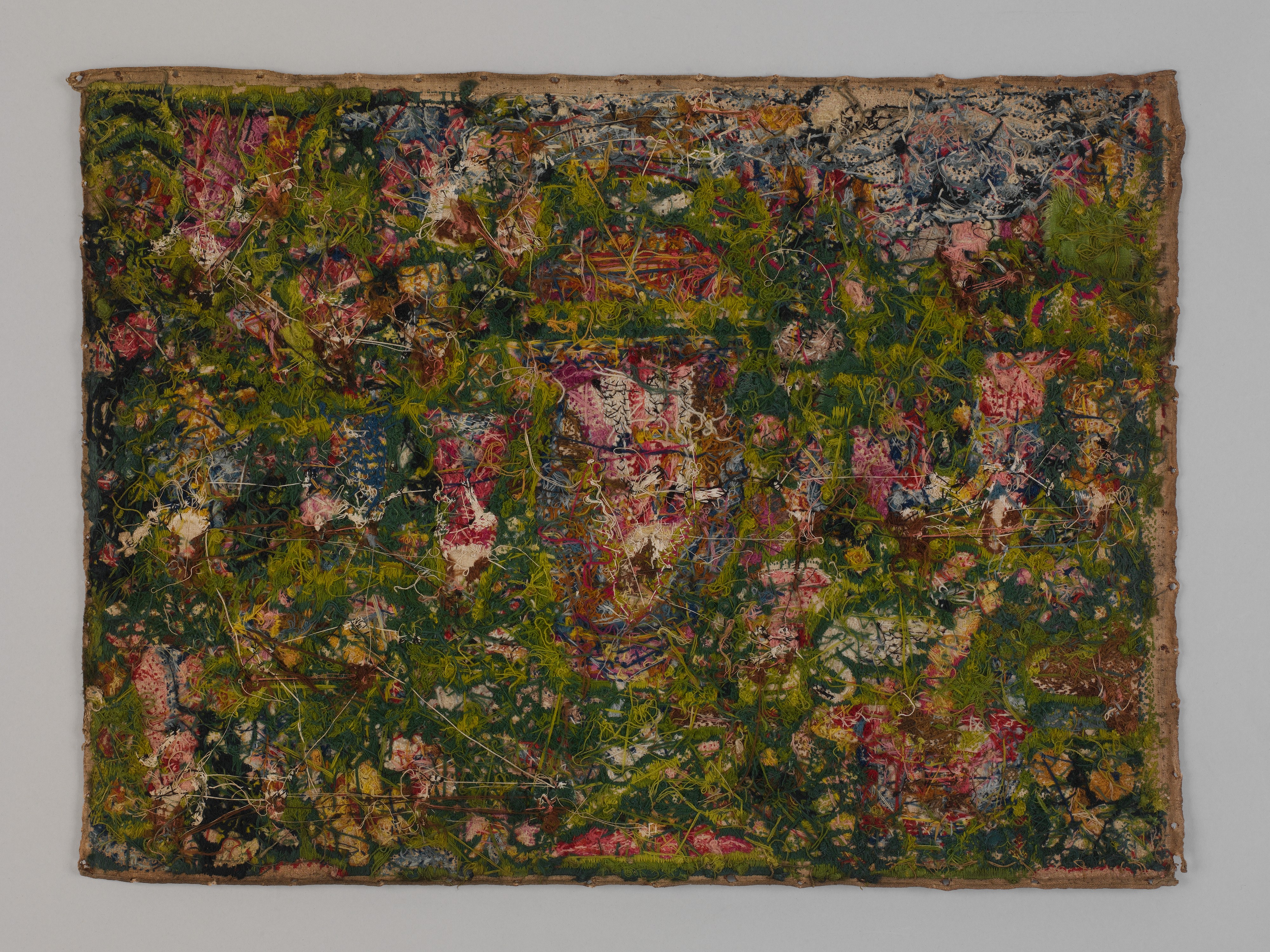Panel with Biblical vignettes
Not on view
This pictorial panel is unusual in that it is worked almost entirely in crewel wool thread, with only details and highlights in silk and metallic threads. Wool was commonly used for tent stitch or needlework on canvas from the sixteenth century, but this fiber is unusual in pictorial works such as this. Wool is more commonly found on bed furnishings of the late seventeenth and early eighteenth centuries on a cotton twill foundation fabric.
The presence of initials and a date probably indicate that this was an amateur production in both design and execution. The composition, which is extraordinarily crowded and naive, even within the genre of seventeenth-century pictures, is a small compendium of religious imagery, each story rendered in a kind of shorthand with only the key scene in the narrative nestled within the pictorial landscape conventions of this type. Hagar and Ishmael, banished from the home of Abraham, exit the scene in the lower left corner, while the princess of Egypt finds the baby Moses to the right. The river that delivered Moses flows from a rocky grotto, home to a mermaid, several types of fantastic fish, and a duck. Above the mermaid’s head at the right, Rebecca offers a drink to Eliezer from an antique urn on which the date 1667 is embroidered. The identity of the king under the central canopy is not certain, but he most likely represents Solomon sitting in judgment, as a woman appears to be pleading for a child in the arms of a cavalier with a sword. This interpretation is strengthened by the presence of a colorful moth or butterfly below the king. If we accept this as a symbol of the restoration of the Stuart monarchy, then the biblical Solomon, with whom King Charles I (father of the contemporary king) had been identified, would have been an appropriate choice. The rest of the panel is populated with flora and fauna, rendered with a typical disregard for relative scale, and a stately home with two small faces behind the mica windows. This particular conflation of religious and secular imagery is interesting for its visual emphasis on the central figure of the king, with other references scattered in a seemingly random fashion around the composition.
[Melinda Watt, adapted from English Embroidery from The Metropolitan Museum of Art, 1580-1700: 'Twixt Art and Nature / Andrew Morrall and Melinda Watt ; New Haven ; London : Published for The Bard Graduate Center for Studies in the Decorative Arts, Design, and Culture, New York, The Metropolitan Museum of Art, New York [by] Yale University Press, 2008.]
Due to rights restrictions, this image cannot be enlarged, viewed at full screen, or downloaded.
This artwork is meant to be viewed from right to left. Scroll left to view more.



